Bulbs
Flower Basics
Flower Beds & Specialty Gardens
Flower Garden
Garden Furniture
Garden Gnomes
Garden Seeds
Garden Sheds
Garden Statues
Garden Tools & Supplies
Gardening Basics
Green & Organic
Groundcovers & Vines
Growing Annuals
Growing Basil
Growing Beans
Growing Berries
Growing Blueberries
Growing Cactus
Growing Corn
Growing Cotton
Growing Edibles
Growing Flowers
Growing Garlic
Growing Grapes
Growing Grass
Growing Herbs
Growing Jasmine
Growing Mint
Growing Mushrooms
Orchids
Growing Peanuts
Growing Perennials
Growing Plants
Growing Rosemary
Growing Roses
Growing Strawberries
Growing Sunflowers
Growing Thyme
Growing Tomatoes
Growing Tulips
Growing Vegetables
Herb Basics
Herb Garden
Indoor Growing
Landscaping Basics
Landscaping Patios
Landscaping Plants
Landscaping Shrubs
Landscaping Trees
Landscaping Walks & Pathways
Lawn Basics
Lawn Maintenance
Lawn Mowers
Lawn Ornaments
Lawn Planting
Lawn Tools
Outdoor Growing
Overall Landscape Planning
Pests, Weeds & Problems
Plant Basics
Rock Garden
Rose Garden
Shrubs
Soil
Specialty Gardens
Trees
Vegetable Garden
Yard Maintenance
How to Clean a Garden Sprayer
How to Clean a Garden Sprayer. A garden sprayer is handy to have on hand to apply various pesticides. It's important to keep sprayers in good working order so that they remain safe when applying insecticides, fungicides and herbicides. Given proper care, a sprayer will last for many years.
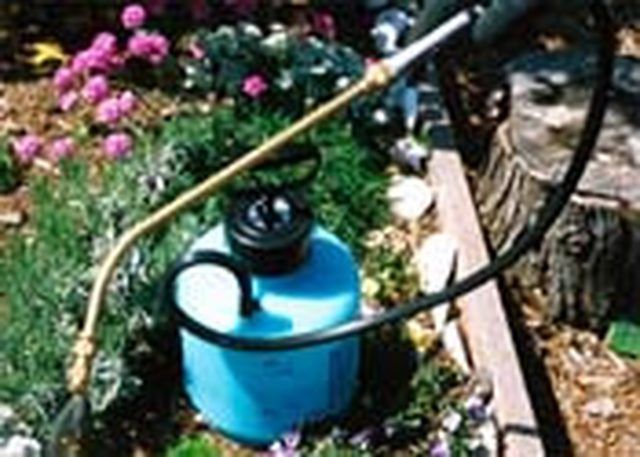
A garden sprayer is handy to have on hand to apply various pesticides. It's important to keep sprayers in good working order so that they remain safe when applying insecticides, fungicides and herbicides. Given proper care, a sprayer will last for many years.
Things You'll Need
Rubber Boots
1-gallon Garden Sprayers
Gardening Gloves
Pollen/dust Masks
Safety Goggles
Use every bit of the pesticide in the sprayer. Never leave unused chemicals in the sprayer for more than a few hours.
Clean the empty tank over a dirt area, never over concrete or in a sink. Unused chemicals may flow into waterways, causing harm to fish and wildlife. Make sure you have plenty of fresh water on hand.
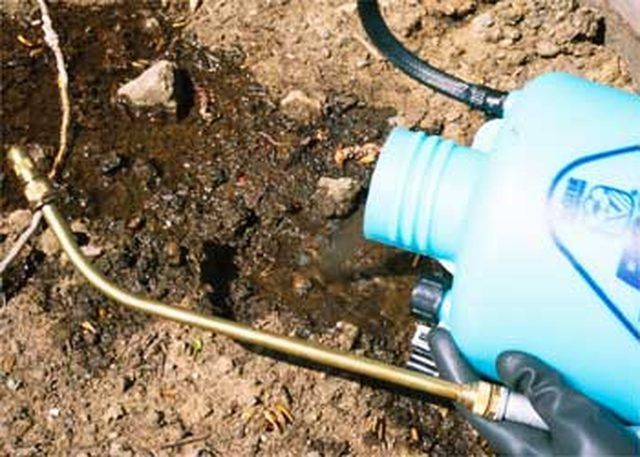
Open the sprayer slowly to release the pressure.
Fill the tank with fresh, clean water, close the lid, then swish the water around inside the tank.
Pump up the pressure and spray the fresh water through the nozzle.
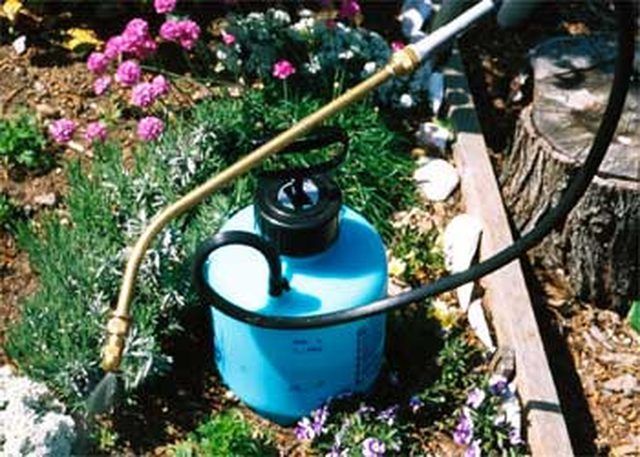
Unscrew the nozzle fitting to check for clogs. Spray clear water though the nozzle with the head fitting removed.
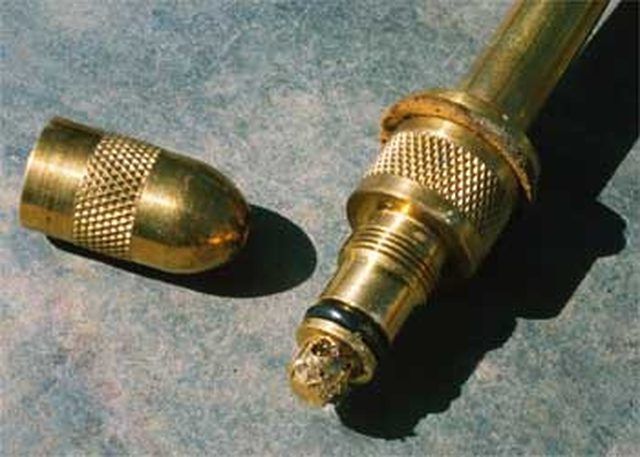
Dislodge small particles from the nozzle with a small twig or blade of grass. Never use wire to clean the nozzle since it may scratch the metal and cause a change in the flow pattern.
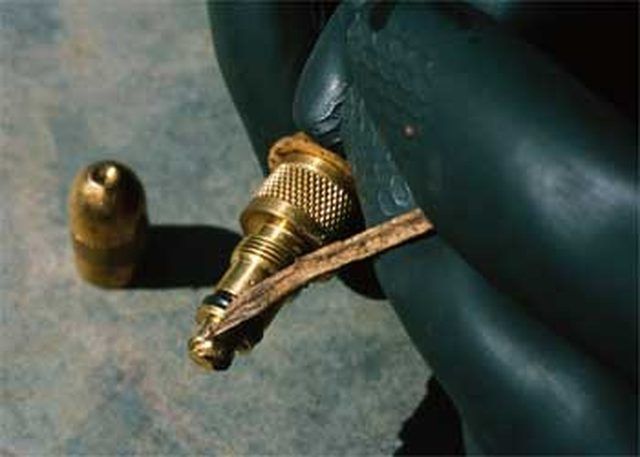
Release the pressure, open the lid and pour the water onto the bare soil. If you are working with a garden hose as your source of water, let it run to dilute the chemical on the soil.
Rinse the tank three separate times, spraying clean water through the nozzle each time.
Store the tank upside down with the lid open.
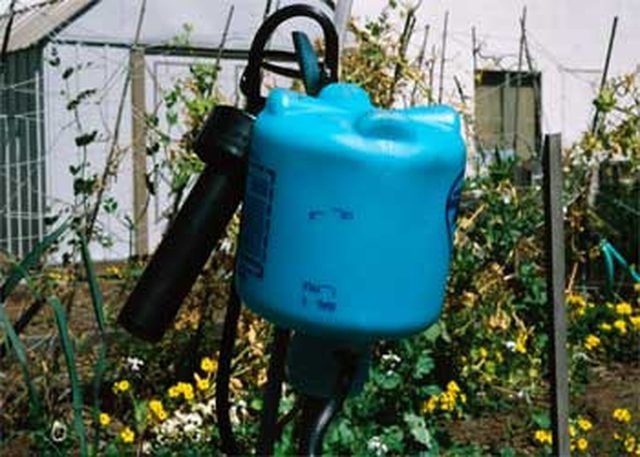
Tips & Warnings
Spray WD-40 on all moving parts including the handle and the pump.
Wear your safety gear while cleaning the tank. This includes goggles, respirator, neoprene gloves and rubber boots.